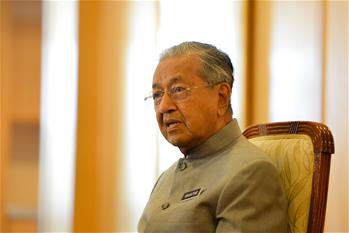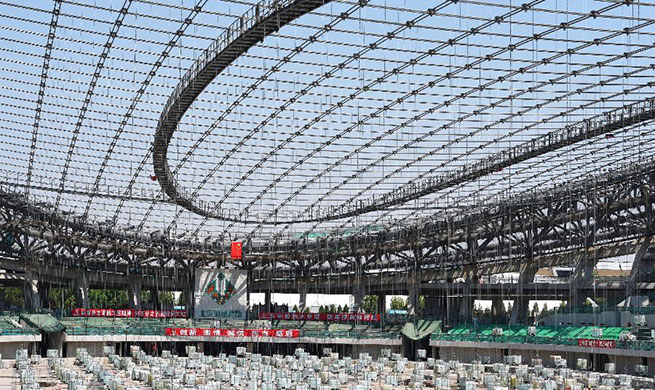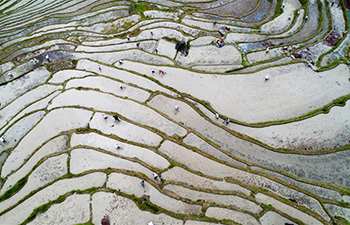by Ahmed Shafiq
QALYUBIA, Egypt, May 10 (Xinhua) -- Egyptian farmer Refaat Khalil looked happy as he watched a big tractor harvesting his wheat field in Qalyubia Province, north of the capital Cairo.
"The harvest this year is bountiful," the 42-year-old man told Xinhua as he observed the machine moving through his two-acre field.
The middle-aged farmer from Qaha village of Qalyubia said that each acre of his field will produce around 24 ardeb of harvest (3,600 kg).
"I will sell my produce to the government and keep some for my own consumption," Khalil told Xinhua.
Egyptian Ministry of Agriculture said that domestic wheat production in the 2018-2019 season will reach 9.5 million tons, half a million tons more than last season.
The ministry expects to receive up to 3.7 million tons of local wheat, compared with 3.3 million tons last year.
"The rest of the annual local produce will be for farmers domestic use," the ministry said in a recent statement.
Egypt, the world's largest wheat buyer, consumes some 16 million tons of wheat annually, which comes from several countries including Russia, Ukraine, France, Romania and the United States.
The Egyptian government is trying to maintain high procurement price to encourage additional planting and buy more from local farmers, while it still has to import above 50 percent of the wheat consumed by Egyptians.
It will pay farmers between 655-685 Egyptian pounds (38.25-40 U.S. dollars) for each ardeb, depending on wheat quality.
Wheat harvest in Egypt starts in mid April and ends in July every year. Villagers with small fields use traditional harvest tools and methods, such as sickles and hand harvesting.
Advanced technologies and machines are used in vast farms that are owned by the government, wealthy farmers and investors.
Khalil said planting one acre with wheat costs around 3,000 Egyptian pounds, adding that the price of the produce per acre ranges from 10,000 to 13,000 Egyptian pounds.
The harvest season is not only good for Khalil who is expecting a good gain once he sells the crop, but also a great opportunity for day workers who help field owners harvest the wheat.
"I wait for the harvest season eagerly just like the land owner," Fangary Mohammed, who helps Khalil harvest the wheat crop with tractor, told Xinhua.
After harvesting the wheat crop, Mohammed will plow the field with the tractor and prepare for the coming wheat planting season.
"For the harvest, I employ six men to help me collect the grain, pack it and clean the machines," Mohammed added during a short break.
Mohammed said the area planted with wheat in Qalyubia has increased this year, under a plan the Egyptian government has been following for four years to achieve wheat self-sufficiency within the few coming years.
"The government has been encouraging farmers to increase the wheat fields nationwide in order to reduce foreign wheat imports," Mohammed told Xinhua.
Egypt's Ministry of Agriculture announced at the beginning of the season that some 3.25 million feddans (3.37 acres) are planted with wheat, which is the main material to make the cheap subsidized bread for Egypt's 98.5 million population.
According to the UN Food and Agriculture Organization, the world's largest wheat importer cultivated a total of 3.2 million acres in 2018, yielding 8.8 million tons.













